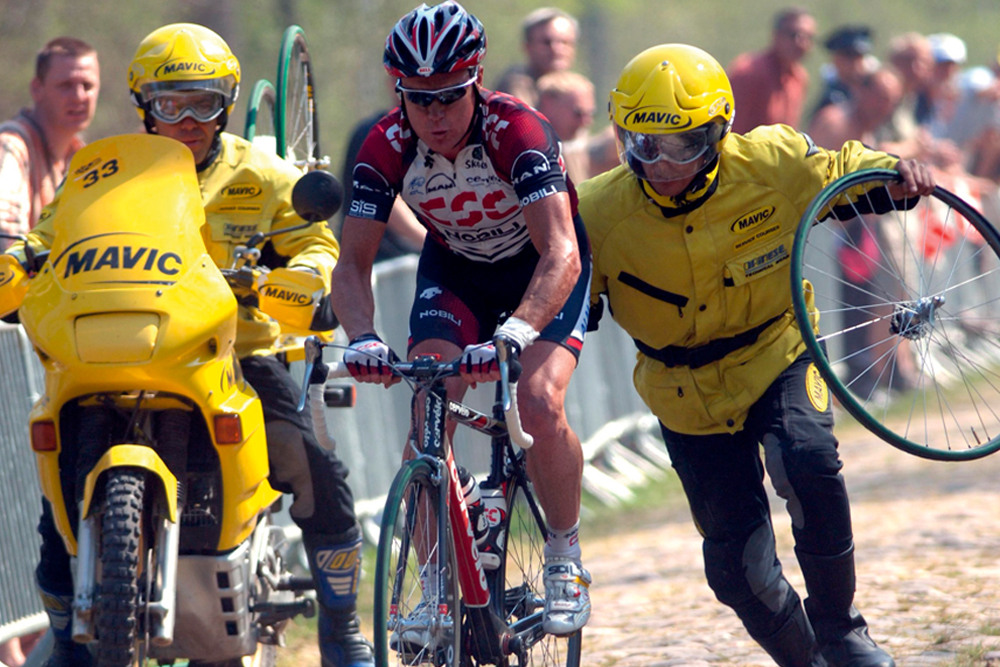Icons of cycling: Mavic Neutral Service
Giles Belbin celebrates pro cycling’s distinctive yellow guardian angels

Stuart O’Grady gets
a race-saving rescue
at Paris-Roubaix 2007. Photo: Graham Watson
A photograph from the 1934 Tour de France shows René Vietto at the side of a road beside a broken bike. Vietto’s leader, Antonin Magne, had broken his wheel and the dutiful servant had handed his to the man who would win the race.
Vietto, who had won three stages, looks forlornly down the road, waiting for his team to arrive. Oh, René. If only there had been some sort of support service on hand.
It would be nearly 40 years before Mavic stepped in. Manufacture d’Articles Vélocipediques Idoux et Chanel dates from 1889 when Charles Idoux and Lucien Chanel formed the business.
In the 1920s Henry Gormand bought the company, creating and registering the first Mavic logo. The company gained a reputation for pushing boundaries, from aluminium rims in the 1930s to tri-spoke wheels in the 1990s. But perhaps its most important innovation was the Service Course.
We can't all rely on neutral service...
Race revolution
The idea of a support service for all teams in a race struck Gormand’s son, Bruno, after he loaned his car to a stranded team director during the 1972 Critérium du Dauphiné. The following year Mavic provided the first neutral service at the Paris-Nice race.
It revolutionised racing. Gone were the days when riders were left, wheel in hand, waiting for their team vehicle. Now assistance was never far away.
The latest race content, interviews, features, reviews and expert buying guides, direct to your inbox!
A yellow vehicle would appear and a wheel, or even a bike, offered to get you moving again. From those early days, the neutral service has grown to the point where the company’s distinctive vehicles are part of the everyday racing landscape.
It was in 1977 that Mavic first operated the service at the Tour. Today it supports around 80 events annually.
They are most in demand at Paris-Roubaix. With team cars not permitted onto the narrow sections of pavé, riders are solely in the hands of the Mavic team.
When the risk of puncture is at its highest, never more welcome is the appearance of a yellow motorcycle laden with wheels and a mechanic who can change a wheel in 15 seconds.
This point was proved in 2007 when Stuart O’Grady punctured in the Arenberg Forest. Neutral service quickly got him on his way to a victory that wouldn’t have been possible before Gormand’s innovation.
Jack Elton-Walters hails from the Isle of Wight, and would be quick to tell anyone that it's his favourite place to ride. He has covered a varied range of topics for Cycling Weekly, producing articles focusing on tech, professional racing and cycling culture. He moved on to work for Cyclist Magazine in 2017 where he stayed for four years until going freelance. He now returns to Cycling Weekly from time-to-time to cover racing, review cycling gear and write longer features for print and online.